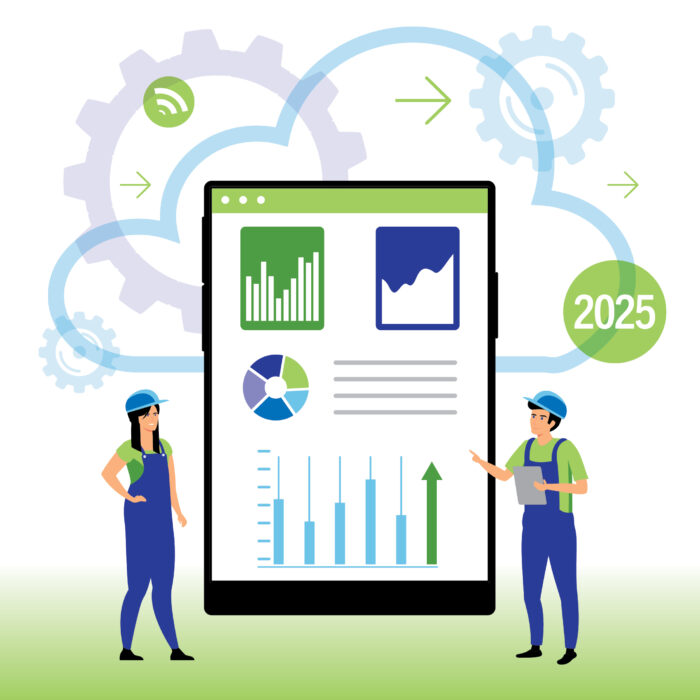New Year, New Goals
Is digital transformation in your plan for 2025?
The beginning of a new year is often a time for reflection on the past and planning for the future. Whether January marks the beginning of a new year or the mid-point in your fiscal year, there’s no time like the present for taking the first steps in your digital transformation journey.
The benefits of digital transformation—enhanced efficiency, reduced costs, and improved decision-making—are undeniable, but the process requires careful planning and preparation. Here are practical steps manufacturers can take in 2025 to ensure a successful transition to a smarter, more connected future:
1. Assess Your Current State
Before starting your digital transformation journey, take a close look at your current operations. Conduct a comprehensive assessment of your existing processes, technologies, and workforce capabilities. Identify pain points and bottlenecks where automation or smart solutions could make the biggest impact.
2. Set Clear Goals and Priorities
A successful transformation requires a focused approach. Define your long-term vision and specific goals, whether it’s reducing downtime, increasing production efficiency, or enhancing product quality. Break these goals into smaller, achievable milestones to keep your progress on track. Develop a digital roadmap with timelines, benchmarks, and metrics to measure success.
3. Build a Cross-Functional Team
Digital transformation isn’t confined to the IT department—it touches every part of your organization. Assemble a team with representatives from operations, engineering, IT, and leadership to collaborate on planning and execution. This ensures that all perspectives are considered, and decisions are aligned with business needs.
4. Plan for Workforce Readiness
Your employees are critical to the success of any transformation. Prepare your workforce by addressing skill gaps and fostering a culture of continuous learning. Focus on training for areas like automation tools, data analytics, and IoT systems.
5. Identify Quick Wins
Large-scale transformations can be overwhelming. Focus on small, manageable pilot projects to test solutions, generate early results, and build confidence within your team. Use these quick wins to refine your approach and scale efforts strategically.
6. Engage with Industry Experts
Technology is advancing rapidly and keeping up can be challenging. Collaborate with technology providers, consultants, and industry peers to gain insights into best practices, new tools, and successful implementation strategies.
7. Foster a Culture of Adaptability
Perhaps the most important step is preparing your organization for change. Encourage employees to embrace innovation and view challenges as opportunities. Celebrate progress and involve the workforce in decision-making to create buy-in.
By taking these preparatory steps, manufacturers can set themselves up for success in their digital transformation journey. A well-prepared organization will not only navigate the complexities of automation and smart manufacturing but also thrive in a competitive, technology-driven landscape in 2025 and beyond.
Need help? Let’s talk.
Polaris Automation develops and implements innovative digital factory solutions that achieve excellence through the convergence of automation and technology – helping you make data-driven decisions and grow revenue through manufacturing advancements. To learn more, visit https://www.polarisautomation.com/.


